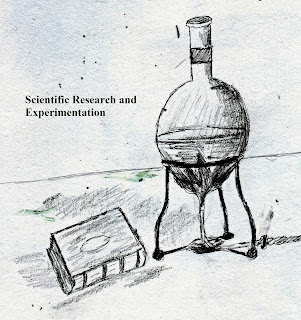Great research and strong academic papers often get
rejected from journals because they do not fit the editor’s interests or are
not from the right credentials in terms of university affiliation or brand of
degree. When good papers are rejected and gibberish papers make their way
through the system into public consumption that is even more concerning. A
computer scientist by the name of Cyril Labbé ran a program to detect spam
SCIgen papers in academic journals and found 100 published between 2008 and
2013 by the Electrical and Electronic Engineers and Springer(1).
The purpose of SCIgen is to publish spam papers and
send them to conferences to determine whether they are bogus (2). In this case their papers were
in many different locations indicating that some of the conferences and
publications were accepting papers that they were not readable and had no
contribution. The editor process was lacking and papers were accepted wholesale
without a review.
Journals should be selective in what they accept but
should also accept papers with important content regardless of university
affiliation. They should not accept gibberish papers that were not vetted,
edited, or reviewed. This diminishes the quality of the journal, its scientific
contribution to society, and damages the institution of scientific publication.
In traditional journals candidates submit scientific
papers for inclusion. The cost is shouldered by the publisher because they have
a significant readership and advertisement base to cover the expenditures. They
are highly selective and follow a model that you may find similar to the book
publishing industry. Only the best papers make their way into the journals.
A problem is the definition of what the best papers
are. Are these the ones with the most scientific impact or greatest societal
benefit? In some cases yes and in others no. Often these publishers only accept
papers from heavy research institutes that have a history of research. New
ideas outside of those institutions are discounted and often rejected based on
perception and not necessarily quality. This leaves them as gatekeepers to
public knowledge.
An alternative way to publish is through journals
that require authors to pay a few hundred dollars for inclusion. This may exist
because the publication is not widely read, it is part of their business model,
and/or it provides those from less esteemed universities to publish works.
However, when such journals don’t check the publication at all they are simply
working on their business model for the money and add little scientific value.
Whether a journal is traditional or non-traditional
the quality should be maintained. That quality should depend on the objectives
of the journal and their approaches to obtaining readership. The quality of the
journal is based on the quality of the papers they accept. That doesn’t mean
they should be exclusive to certain universities but should be open to high
quality papers from a variety of backgrounds. Both traditional and
non-traditional journals will need review their editorial process to focus on
readership growth through quality work.
